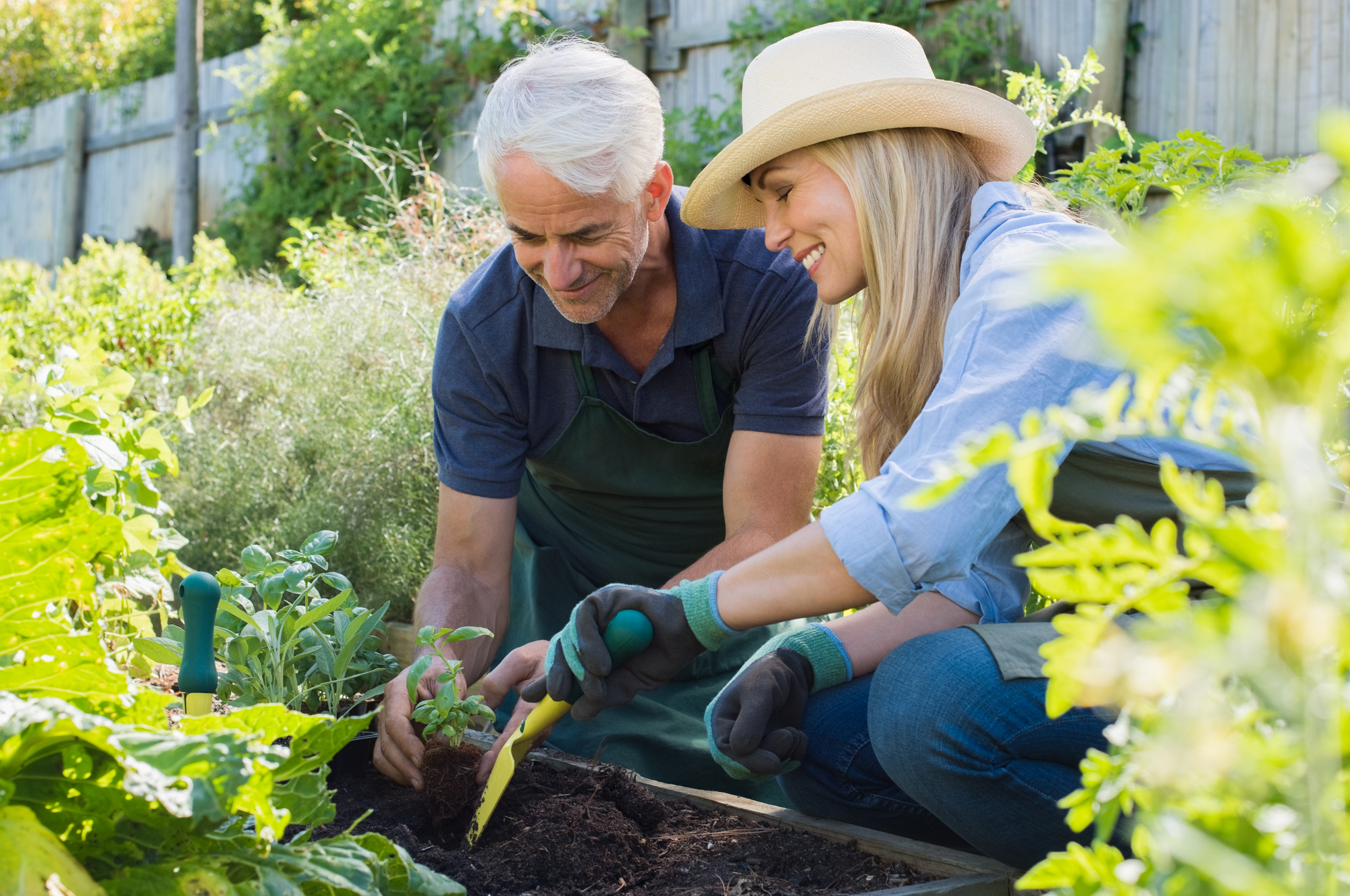
Taking care of your back does not mean you need to cross gardening off your list. Nurse Practitioner Aimee LaMere shares how you can still enjoy gardening by using these 5 strategies to minimize back injury:
1. Stretch and take breaks
Gardening can be a real workout, so warming up your muscles before you start is a good idea. Try a brisk five-minute walk and some stretching exercises. One relatively gentle stretch is the back-flexion exercise, in which you lie down on your back, then pull both knees to your chest while bringing your head forward. If you’ve been in one position for a while, do some stretches during these breaks.
If you have back pain, then work with your physician or physical therapist to find the right stretches for you. Also, avoid doing the same kind of task, such as pruning, for a long period.
2. Tips for finding the right tools:
- Consider the weight of the tool. Looking at tools in person can help determine if it’s the right fit for you, and not too heavy.
- Long-handled tools can eliminate much of the bending required by planting and weeding.
- Kneelers and Chairs:Heavy-duty kneelers, especially those with raised, padded handles can help you get up and down, allowing you to use your arm strength to aid in the process. Kneelers usually have a well-cushioned base to reduce stress and impact on your knees and back, and can also be used as a low chair. Knee pads are a good option if you are more comfortable kneeling at ground level.
- Garden Wagons/Carts: 4 wheel carts are easier to push and pull than the old-fashioned wheelbarrows, and are significantly less straining on the body. There are a variety of cart types out there that can minimize lifting, provide aide to haul heavy items from place to place, and wheel easily over uneven terrain, lawns, and tree roots.
- Large watering cans are heavy when full. Fill large watering cans just halfway, and consider alternative watering options, such as soaker hoses or automated irrigation systems.
- Planters/Pots: Once filled with soil, planters can get pretty heavy. Take some weight off by choosing a plastic pot instead of ceramic.
3. Lift with your legs, not your back
- Lifting heavy objects without proper back support can strain or injure your back. Proper lifting begins with squatting, not bending at your waist. Use both hands to hold the object, keeping it close to your body, and slowly straighten your legs as you stand.
- Ask for help. Depending on your back problem, chores that involve heavy lifting and twisting may be best left to others.
4. Raised Beds and Container Gardening
- Raised-bed gardening offers plenty of planting options. Some of the sturdier raised beds include an edge where the gardener can sit while planting or harvesting vegetables, fruits, or herbs. Raised beds are often wheelchair accessible as well. Some raised beds and planters are combined with a trellis ideal for climbing vegetables, such as peas.
- Concentrating on growing plants in containers can make gardening much easier. In addition to flowers, larger containers can be well-suited to growing lettuce and other vegetables. Be sure to use extra-deep containers for tomatoes, peppers and cucumbers. Wheeled structures called plant caddies can be used under heavier pots to avoid lifting, pushing, and pulling
- Go vertical. One way to minimize use of your back is to use the vertical space you have. Plant up, not across the ground. If bending is painful for you, working more at your eye level may be something to consider. This can be done with a trellis, tomato cage. Instead of chasing that vine around the garden, or looking under leaves for fruits and vegetables, you will be able to find them on the trellis or hanging on the tomato cage.
5. Keep Weeds out
- Weeding is a repetitive motion that causes more stress on your back than you might expect. Putting down a weed barrier such as Weed Control Landscape Fabric, straw or mulch generously around your plants to reduce weeds. The straw or mulch also keeps moisture in, so you won’t need to spend as much time watering. If you are still fighting weeds, consider using a long-handled weeding tool to reduce strain on your back and neck.

Click here to learn more about Aimee LaMere, CNP